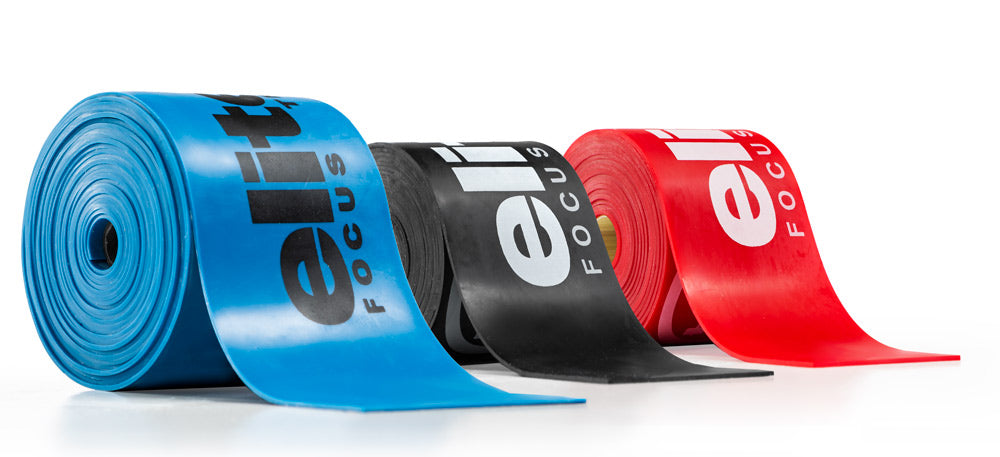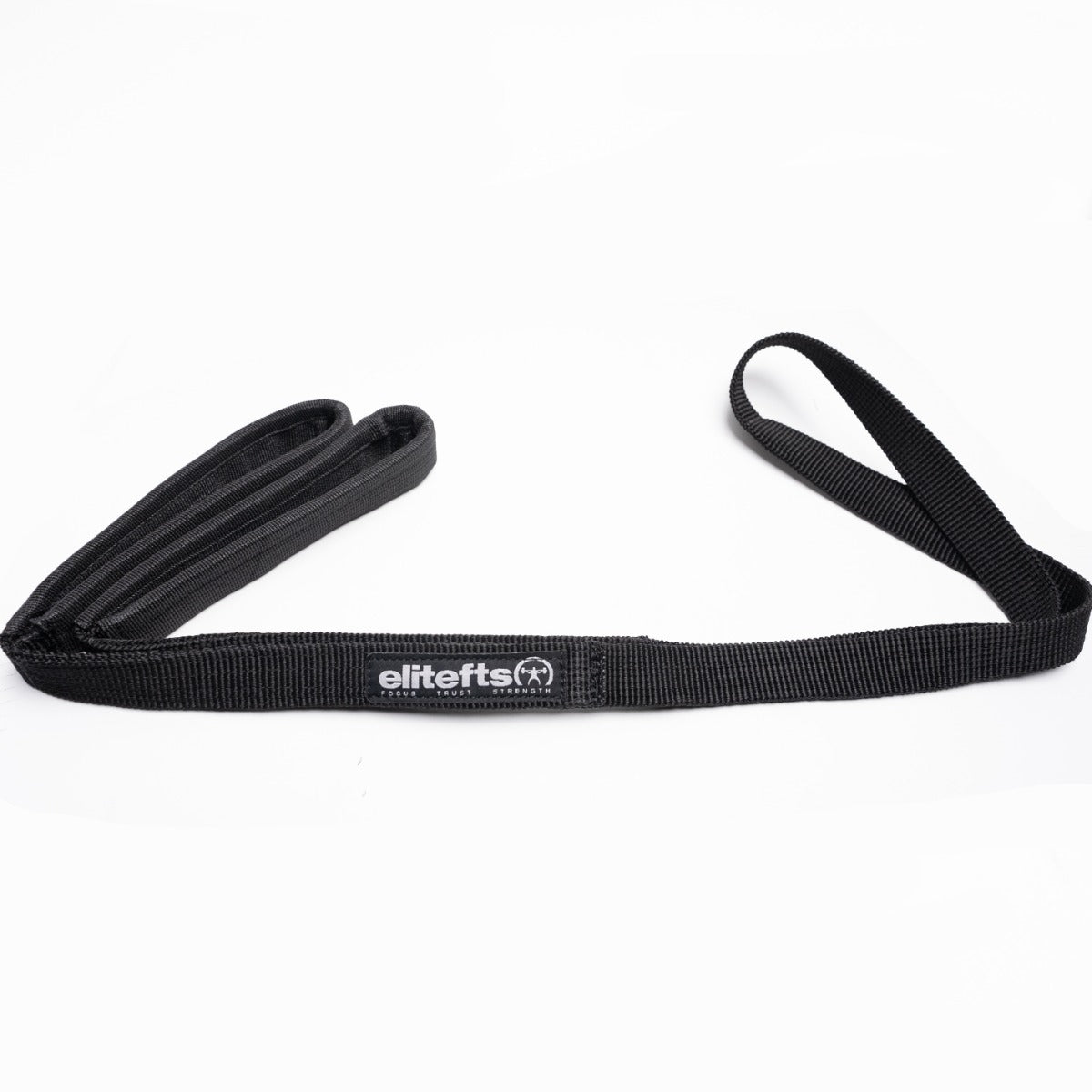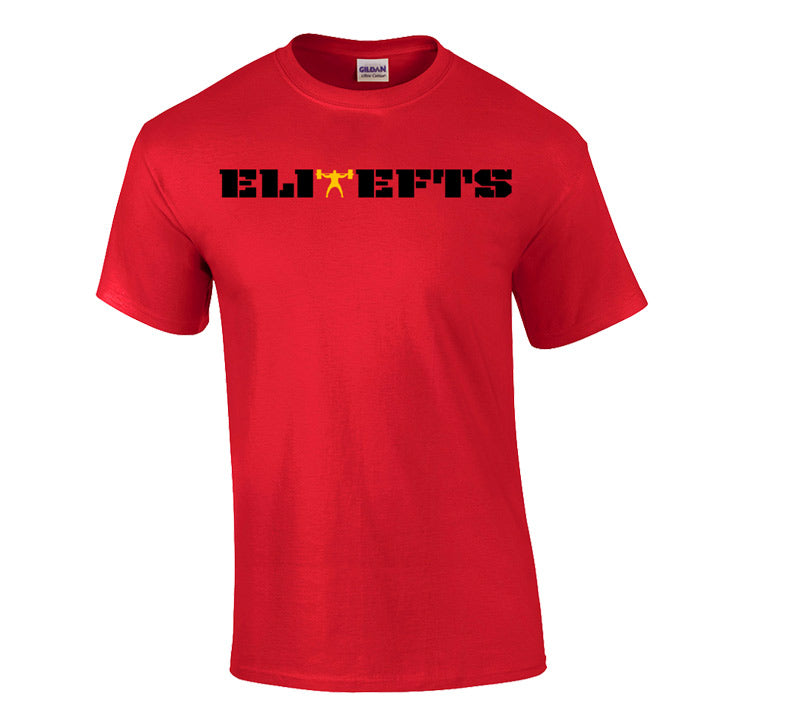kettlebell up to your shoulder. It doesn’t matter which arm because you’ll switch when you’re finished. From here, your feet should be in a classic squat stance or the proper stance for a kettlebell clean. If the kettlebell is in your right arm, you will turn both of your feet 45 degrees to the left, keeping your heels in the same spot. Obviously, if the kettlebell is in the left arm, your toes will point to the right. This is your starting position. From here, with a straightforward gaze, push your hips back at a 45-degree angle toward the kettlebell. So if I have the kettlebell in my right hand, I’m pushing my hips back to the right. Next, turn your head and start looking up as you begin to press the kettlebell straight upward. Never, ever, ever, press in any direction other than completely vertical. Hold 53 pounds out at a 45-degree angle and tell me how long you can hold it before you become fatigued or something tears. Don’t actually do it. I’m just proving a point. While you’re pressing vertically, your free hand is reaching toward the ground and toward the inside of the plantar (sole) of your foot. You will keep pressing and reaching until your arm locks out and your free hand touches the ground with the legs straight and your pressing arm vertical. Your hand should touch the ground at the same time your elbow locks out. Following so far? Good. Now it gets really fun. While still looking straight up at the kettlebell and with a fully extended arm, stand back up, returning to your original position with your arm locked out overhead. As you stand, go in reverse order as your descent. Come up and then once almost fully erect, bring your hips back to where they should be. Only after standing all the way up will you safely lower the kettlebell to your shoulder to repeat for the specified number of reps. This entire movement is to be done with precise control and a focus on technique and execution. Never sacrifice form for weight in this movement and never allow your back to lose its arch. Mastered that? Great! Let’s improve upon this. Put another kettlebell in your free hand. That will make standing up harder to do, thereby working your core musculature more. Want to throw some balance into it? Grasp a barbell in the center of the bar and press with that. This is best done from a rack. Note that this is an even more advanced movement than using a kettlebell and should only be done after you’re very competent with the kettlebell. I’m talking months of practice. How will this improve my deadlift? When we break this down into its simplest form, this is a straight leg deadlift. The major difference here is that your center of gravity has shifted from your S2 vertebrae to probably somewhere at and slightly behind your pressing elbow. Sixteen kilos (35 pounds) will never work your lower back more. So after getting a PR on your 1RM deadlift, I think it would be safe to assume that your lower back might be a little stiff, weak, and sore for, at a very minimum, three days. If we look at the law of accommodation, we’ll see that after so many repeated efforts of the same movement, your body will eventually accommodate to the resistance and the gains will diminish. This is just another tool to throw in your tool box to help break up the routine. Dan John, in
Pavel Tsatsouline’s book Enter the Kettlebell has stated, “Power to the People! had all the earmarks of a perfect program. Do this. And, ‘this’ was deadlifts and side presses.” I‘ve also read that one of Pavel’s pupils was able to deadlift 405 pounds with just kettlebell training. To paraphrase Pavel, “405 pounds is not impressive by powerlifting standards, but when only kettlebells were being used, that says something.” Shoulder flexibility aside, the overhead squat movement requires a tremendous degree of hip and lower back strength. If you even attempt 15 reps at the heaviest you can possibly lift, you will feel this around rep number nine. Now the side press is helping us in three areas as opposed to two with the deadlift—shoulder strength/mobility, lower back strength, and hamstring strength/flexibility. All are critical to the overhead press. Lack in one area and you’ll never hit your full potential. Side presses have become a staple in our program and will remain as such.


































































































